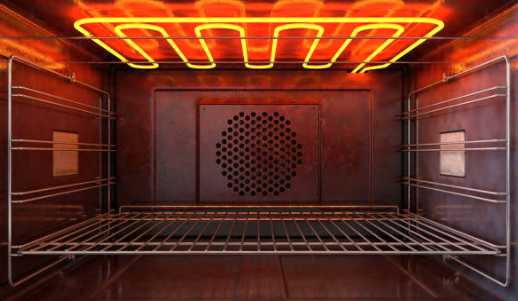The Oven's Hottest Spot: The Top Heating Element
When it comes to the hottest part of the oven, the top heating element takes the crown. This element, usually located at the top of the oven cavity, is responsible for generating intense heat to cook your food. It typically reaches the highest temperature among all the oven components, ensuring efficient and even cooking. However, it's important to note that different oven models may vary in design and heating technology, which can affect the distribution of heat within the oven.
The Bottom Heating Element: A Reliable Heat Source
While the top heating element is the hottest part of the oven, the bottom heating element is equally crucial in maintaining consistent temperature levels. This element is typically placed at the bottom of the oven cavity and works in tandem with the top element to create a balanced cooking environment. The bottom heating element helps ensure that your food is evenly cooked from both above and below, preventing any undercooked or overcooked spots.
The Importance of the Oven Walls
Although the heating elements play a significant role in determining the oven's temperature, the oven walls also contribute to heat distribution. The walls of the oven cavity absorb and radiate heat, helping to create a more consistent cooking environment. They act as a buffer, preventing sudden temperature fluctuations and providing a more steady cooking experience.
The Temperature Control Panel: Setting the Heat
The temperature control panel, usually located on the front of the oven, allows you to adjust the oven's heat according to your cooking needs. This panel is an essential component for regulating the temperature of the entire oven cavity. By setting the desired temperature, you can ensure that the oven's heating elements work together to reach and maintain the ideal cooking temperature.
Exploring the Oven's Interior: The Center Rack
When it comes to cooking food, the placement of your dish within the oven can significantly impact the cooking process. The center rack is often the recommended position for most recipes, as it provides even exposure to the oven's heat. Placing your dish on the center rack ensures that it receives consistent heat from both the top and bottom heating elements, resulting in evenly cooked meals.
The Oven Door: A Barrier Against Heat Loss
The oven door plays a crucial role in maintaining the oven's internal temperature. It is designed to keep the heat inside, preventing any significant heat loss during the cooking process. The door is equipped with insulation and seals that help trap the heat within the oven cavity, ensuring efficient cooking and energy usage.
The Broil Setting: Intense Heat from Above
Many ovens offer a broil setting, which utilizes the top heating element to generate intense heat from above. When using the broil setting, the top heating element reaches its highest temperature, allowing for quick browning and crisping of the food's surface. This setting is ideal for dishes that require a golden finish or a slight char on top.
The Convection Feature: Enhanced Heat Circulation
Some ovens come with a convection feature, which utilizes a fan to circulate the hot air inside the oven cavity. This feature helps distribute the heat more evenly, resulting in faster and more efficient cooking. By minimizing temperature variations, the convection feature ensures that every part of your dish receives the same amount of heat, resulting in a perfectly cooked meal.
The Warm Zone: Maintaining Food Temperature
Many ovens have a warm zone or a warming drawer feature, designed to keep cooked food warm without further cooking it. The warm zone is typically located at the bottom of the oven and operates at a lower temperature than the main cooking area. This feature is useful when you need to keep your dishes warm while waiting for other components of your meal to finish cooking.
The Importance of Preheating
Preheating your oven is a crucial step to ensure consistent cooking results. By allowing the oven to reach its desired temperature before placing your food inside, you ensure that the cooking process starts evenly. Preheating also helps activate certain chemical reactions in your recipes, leading to better texture and flavor. Remember to always follow the recipe's instructions for preheating to achieve the best cooking outcome.

